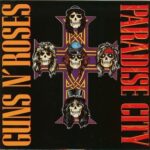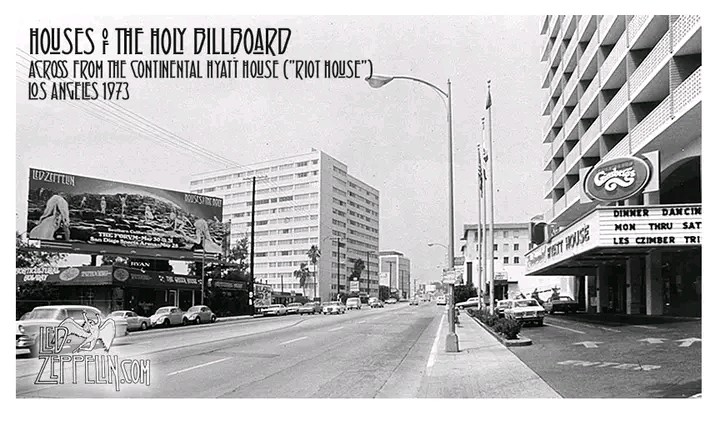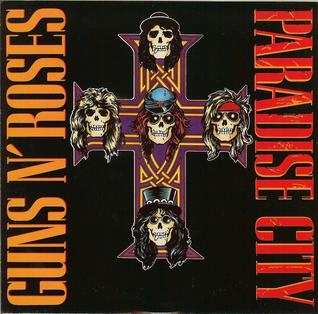In 1973, one of the most iconic billboards in rock history appeared on the Sunset Strip in Los Angeles, promoting Houses of the Holy, the upcoming album by Led Zeppelin. Situated across from the notorious “Riot House” (the Continental Hyatt House), this billboard became a symbol of both the band’s growing fame and the wild atmosphere surrounding rock ‘n’ roll in the early 1970s.
The Houses of the Holy billboard featured a striking image that was both enigmatic and visually compelling, drawing attention from both fans and passersby. It displayed an ethereal image of the album cover, which depicted naked children climbing a set of rocky stairs against a surreal, otherworldly backdrop. The image was both controversial and mesmerizing, much like the band’s music. With its bold, psychedelic design, the billboard became an instant fixture of the Sunset Strip’s vibrant, hedonistic scene. The strip itself was synonymous with rock culture during this period, with many famous music venues, recording studios, and hotels scattered along its length.
Directly across from this billboard stood the infamous Continental Hyatt House, often called the “Riot House” due to the legendary parties and chaos associated with rock stars staying there. The hotel was a frequent haunt for Led Zeppelin and other iconic bands of the era, with the musicians known to indulge in debauchery and create havoc. The juxtaposition of the Houses of the Holy album promotion with the chaos of the Riot House made a fitting metaphor for the rock ‘n’ roll lifestyle at the time—raw, rebellious, and unrestrained.
The Sunset Strip, often referred to as the beating heart of the Los Angeles music scene, was a place where bands like Led Zeppelin could reach an audience beyond their music, blending art and lifestyle into one. This billboard was not just an advertisement for the album; it was a cultural marker, a glimpse into the mind-bending world Led Zeppelin inhabited. For many, the sight of the Houses of the Holy billboard served as a rite of passage—a sign of the rock gods’ presence in the city that never sleeps.
The album itself was a commercial and critical success, cementing Led Zeppelin’s place in rock history. However, the image of the billboard, alongside the chaotic mythos of the Riot House, became a symbol of the hedonistic, rebellious energy of the 1970s rock scene in Los Angeles, forever tied to the legacy of the band and the era.










